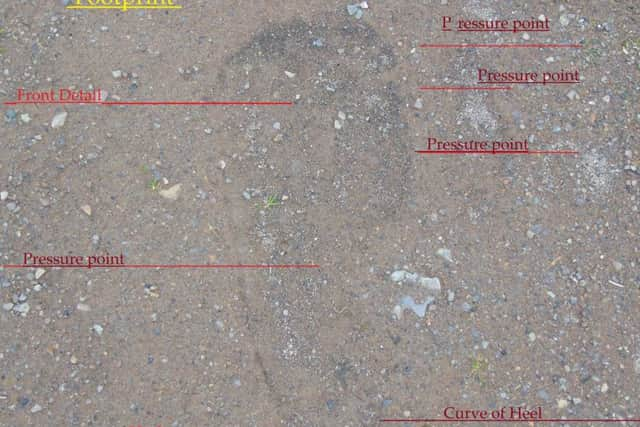Monster hunter claims he has evidence of a mythical beast roaming the Galloway Forests


Robert Shankland, 56, has been on the trail of the mythical creatures since 2016 following his attendance at a zooological conference in Glasgow by the Bigfoot Research team.
And as a result of his extensive research in the Galloway Forest area, he now thinks he’s got images from the footprint of an unknown beast, which closely resembles a human print.
Advertisement
Hide AdAdvertisement
Hide AdGalloway Forest Park is the UK’s largest at over 97,000 hectares, much of it wild and unexplored which Robert reckons is an ideal habitat for these creatures to exist with no interaction or interference from humankind.


The scientific community has generally regarded the Yeti as a legend, given the lack of evidence of its existence.
The Yeti, said to be an ape-like entity, taller than an average human, is more commonly linked to the Himalayan region of Nepal, Bhutan, and Tibet.
Robert said: “After hearing the speaker at that Glasgow conference I decided to see what I could find in my local area, although to be honest, I really didn’t expect to find anything. I couldn’t believe it when I came across the footprint.”
Robert claims his photographs show a large footprint-shaped mark outlined in gravel near to Corson Cone in the Craigdulyart Forest area of New Cumnock.
There is a train of thought that the corridor which exists between the Cairngorms and Galloway could help explain the Big Grey Man of Ben MacDhui, also said to be a Yeti. Known locally for decades it entered folklore when Professor Norman Collie spoke of it in 1925 claiming that he was followed on the mountain, forcing him to take flight to the forest below in Rothiemurchus.
In one genetic study, researchers matched DNA from hair samples found in the Himalaya with a prehistoric bear from the Pleistocene era.
An early record of reported footprints appeared in 1899 by Himalayan Explorer Laurence Waddell. He reported his guide’s description of a large apelike creature that left the prints, which Waddell thought were likely made by a bear. It’s doubtful whether there are many of them in Galloway that could leave the print Shankland claims to have found.
Advertisement
Hide AdAdvertisement
Hide AdWestern interest in the Yeti peaked dramatically in the 1950s. While attempting to scale Mount Everest in 1951, Eric Shipton took photographs of a number of large prints in the snow, at about 6,000m (20,000ft) above sea level. These photos have been subject to intense scrutiny and debate. Some argue they are the best evidence of Yeti’s existence, while others contend the prints are those of a mundane creature that have been distorted by the melting snow.
So, if you happen to be out and about in the forests of Galloway, keep a camera handy, and listen for every unusual sound. You just never know!